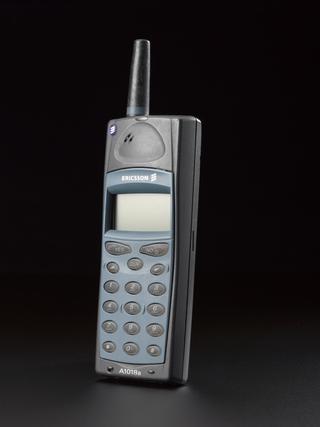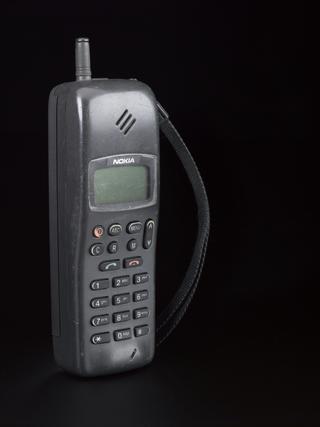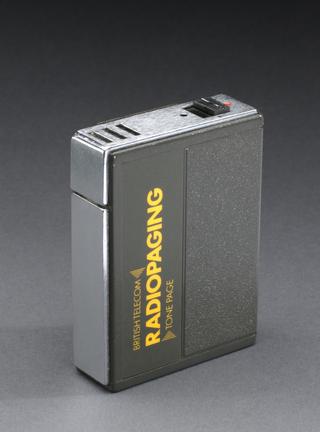
Electrophone table, by National Telephone Company, England, c.1895-1925
- Made:
- circa 1895-1925 in England







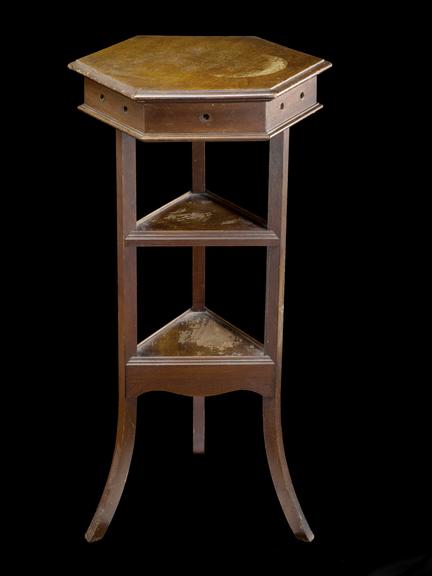


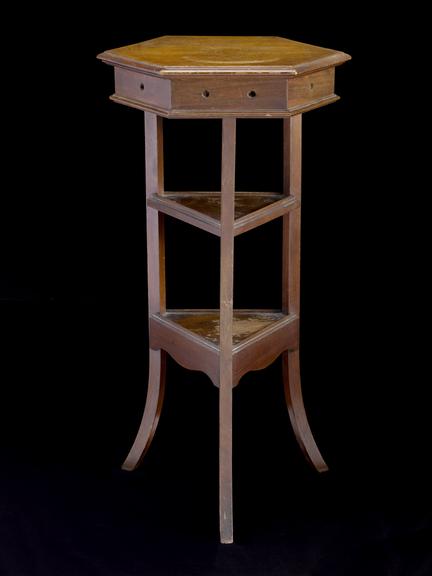

Electrophone table, used for receiving concerts and other public events from theatres, churches, etc, which were wired up with Electrophone microphones. One paid an extra subscription and when wanting to hear a play or a concert, one asked to be connected to the Electrophone switchboard at the exchange and asked for the desired concert. The table had connexions for up to six headsets. The idea originated in France but was adopted by the National Telephone Company in the early 1900s (hence the ‘NT’ initials on the underside of the table.) Service ceased in London in about 1925 but lingered on in Bournemouth until the mid-1930s.
An Electrophone table was used for receiving concerts and other public events from theatres, churches, etc, which were wired up with Electrophone microphones. The table had connexions for up to six headsets and the lid is removable via a wing nut under the table top base showing connection numbers.
The idea of the electrophone broadcast service originated in continental Europe around 1890, with the Telephone Herald in Budapest which allowed subscribers to dial in for news and in in Paris where the Théâtrephone provided live entertainment by telephone.
The Electrophone telephone broadcast service came to the UK shortly afterwards in the mid-1890s – the Electrophone Company was founded in London in November 1894 and began offering a public service the following year in 1895, “broadcasting” news, entertainment and church services over the lines of the National Telephone Company. The ‘NT’ initials on the underside of this electrophone indicates the National Telephone Company – the underside is engraved “(E23) / F.H.25. NT.10”. By 1908, subscribers to the Electrophone service reached 800 and would have included Marconi Company engineer H.J. Round, the original owner of this electrophone table. As far as we know, Round did not have any technical role with the electrophone service.
Transmitters in the venues were routed through the Electrophone exchange and on to subscribers, listening to the requested performance by means of headphones. The Electrophone company also provided these listening posts for rental in public areas, which meant that customers didn't need a telephone at home to be able to enjoy the entertainment. As such, electrophone tables were found in gentlemen's club and salon as well as the domestic sphere (where this example most likely was used). The multi-headset tables made the electrophone a shared entertainment experience for friends and family – or those who could afford it. Public electrophones could be paid for with a coin slot (so a “pay as you go service”) while domestic sets (such as this one) would have required a subscription of about £5, a not inconsiderable cost which covered the high line rental prices paid by the Electrophone Company to the National Telephone Company.
As ‘free to air’ broadcast radio become more popular in the UK with the foundation of the BBC in 1922 (made possible by the radio valves in which electrophone owner HJ Round had a key role), the electrophone subscription service decreased in numbers popularity and electrophone service ceased in London in about 1925 but lingered on in Bournemouth until the mid-1930s.
Details
- Category:
- Telecommunications
- Object Number:
- 2018-456
- Materials:
- wood (unidentified)
- type:
- electrophone table
- credit:
- Mike Fisher
